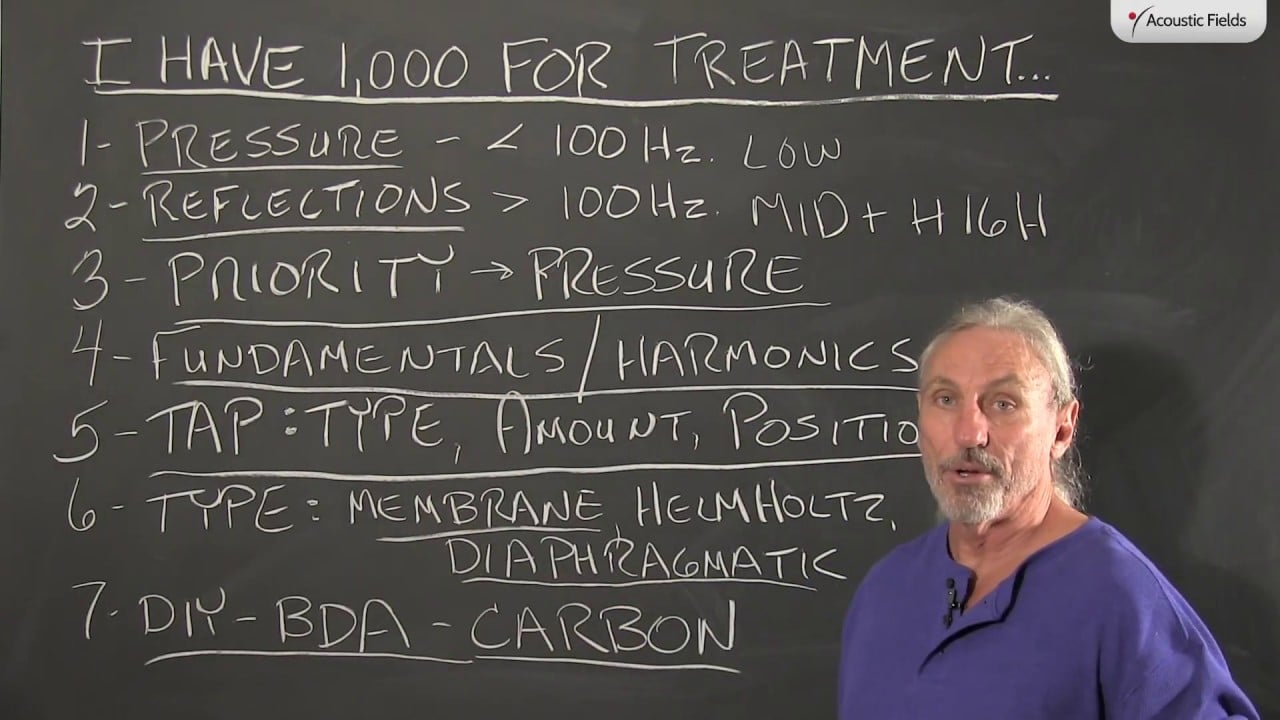I get a lot of people who send me emails, call me and say Dennis I don’t have a lot of money but I got a lot of problems in my room and we all know from past videos and things that we’ve done and talked about that small rooms have big problems big problems always take large amounts of surface area, large amounts of surface area cost lots of money so what can we do?
I’m going to break some of these videos down into three different parts, thousand, two thousand and three thousand and we’ll talk about some kind of treatment options that you have and things that you can do yourself. The big thing about all of this is the DIY, doing it yourself because with a thousand, two thousand, three thousand dollars in a budget you’re going to have to contribute your own labor. You can buy the materials to build the technology under our supervision but you’re going to have to contribute your own labor, obviously if I build it for you in my shop I have to pay my guys and the product prices go up and you can see those on the website but the goal here is to treat your room with at least some attempt to get things that realized and working for you.
So let’s work with a thousand dollars, we have a thousand dollars for treatment, what’s going to be our focus? Well we remember from past videos that we have two issues in our small rooms, pressure and reflection. We know that the energy below 100 (Hz) is what we’re going to call low and then this pressure we’re going to call mid and high so we have the reflections off the surface and we have the pressure from all this low frequency energy that won’t fit so if we only have a thousand dollars to work with – even if you have five thousand dollars to work with the emphasis always has to be on the low frequency first. If you do not get the low frequency right in your room you just simply won’t have good sound period. I don’t care if you have the highest and best gear in the world, if your resolution is wonderful. If you’re emotionally connected to the music through your middle and high frequencies when that low frequency note hits, when that bass note hits it’s going to blur and smear everything so you’re going to then not play that recording, turn it down all the time when that’s coming in, get EQ into the circuit which is its own set of issues, so the bottom line is we’ve got to manage the pressure.
Always when we’re trying to treat low-frequency pressure we have to use the acronym TAP; type amount and position. What type of treatment, how much and where are we going to put it, all these issues have to be resolved first. Just building something without knowing why you’re building it… we see it all the time. I just saw a project in Israel today, beautiful theater, hundreds of thousands of dollars spent, no care and concern for the low end of the room, 10 or 15 speakers it’s an Atman System, no concern at all for the low frequency energy and the client can’t understand why it doesn’t sound good. So the theater is done, hundreds of thousands of dollars have been spent, what do we do? We’ve got to tear it apart, not the most pleasant thing in the world. So what do our types when we’re dealing with pressure and low frequency? Membrane, Helmholtz and diaphragmatic, we all know those from past lectures, we know that this is our area of specialty that we’ve chosen to develop and we’ve taken the diaphragmatic absorption process which has been around for years and then we’ve added our carbon technology to it. So it has the most absorption, the highest rates and levels for the smallest amount of space compared to membrane and Helmholtz. Helmholtz is as we know frequency specific, hard to get, hard to tune, you need a lot of them for all the frequencies. Diaphragmatic is broadband, membrane is broadband also but just doesn’t have the horsepower the diaphragmatic has and then when you add our carbon technology to it you can really increase the horsepower by up to 30% and we can license and sell that to you. You can build the cabinet yourself when we can tell you the carbon
So first thing we want to do with $1000 is to build as many low frequency absorbers as we can, most small rooms take 80 to 120 square feet, each 2 by 4 foot unit is 8 square feet so you can see you’re going to need 10, 12, 14 units so with $1000 we might be able to build 3 or 4 to get started. It’s a start, get them in your room, see how they work, hear the difference they make, walk around your room, you’ll be able to know immediately where you need it. So if you have $1,000 for treatment we need to focus on the low end first and you’re going to have to do some DIY stuff and we can offer you the plans and even our proprietary carbon technology to assist you.
—
This is an unedited transcript from our video series from Acoustic Fields. There will be some errors in grammar and sentence structure that occur during this translation process.
For complete understanding and comprehension, please view the video which is included in this text. For any additional information regarding this topic or others relating to room acoustics, please contact us directly at:
P: 520 – 392 – 9486







